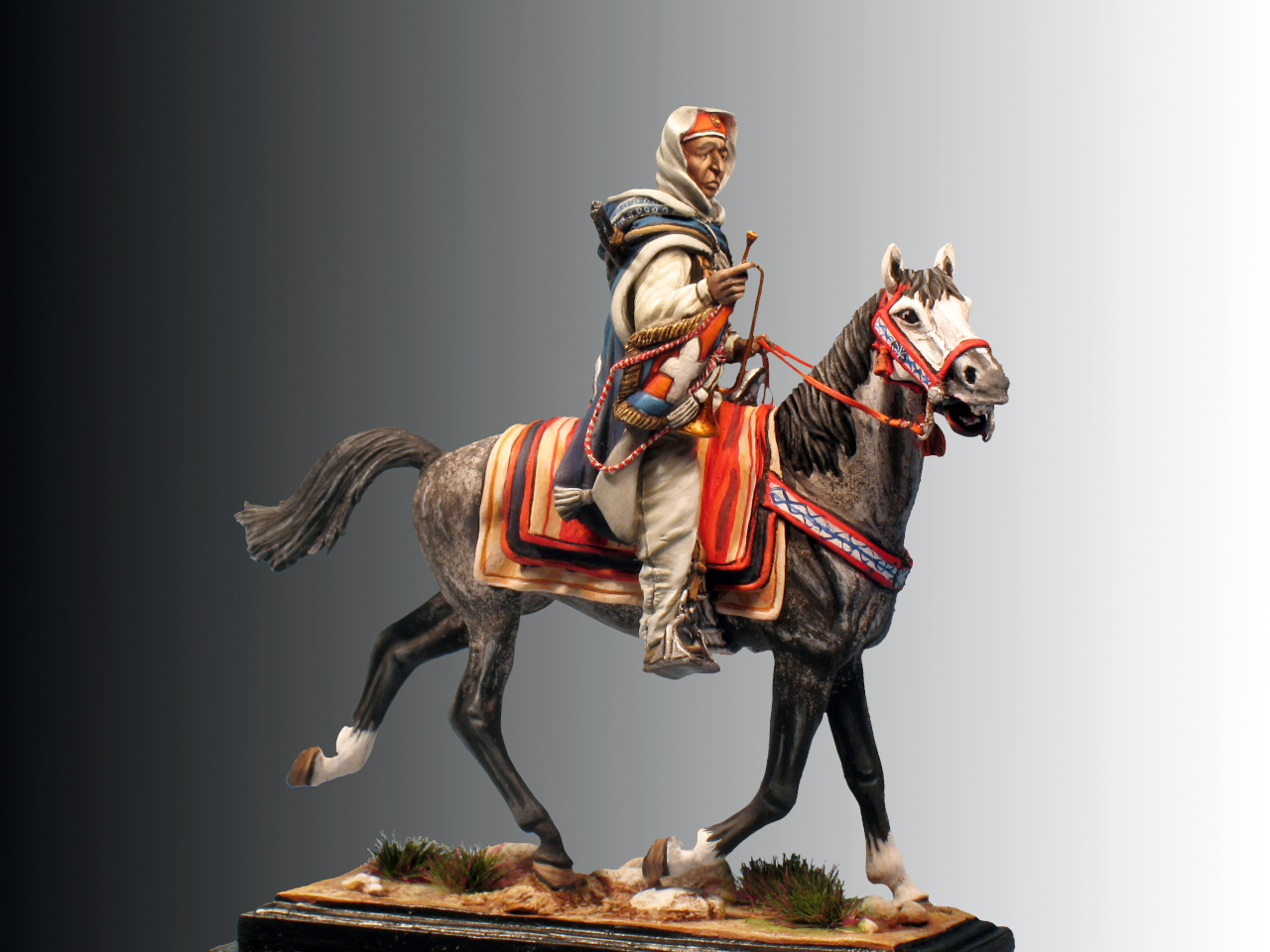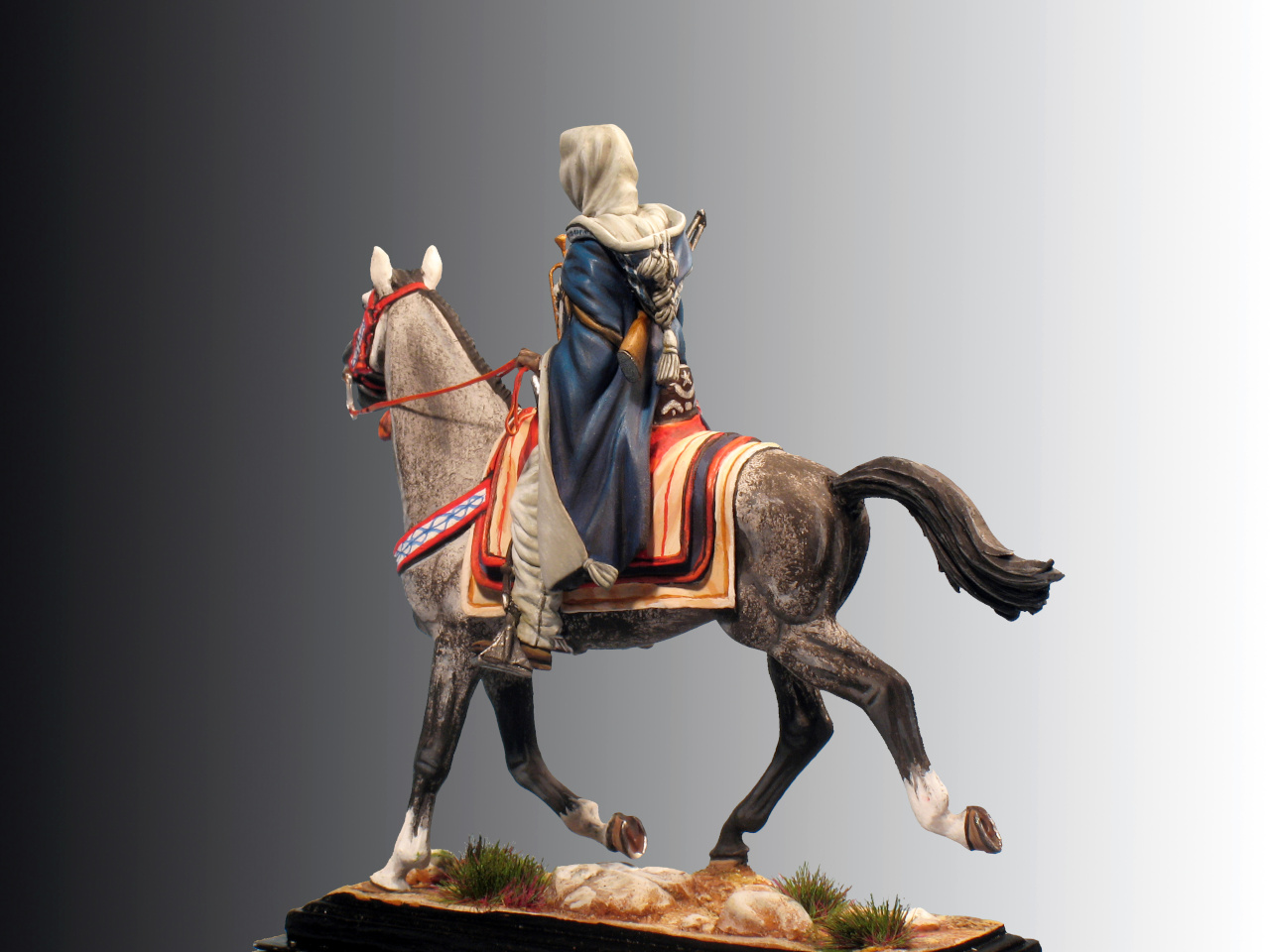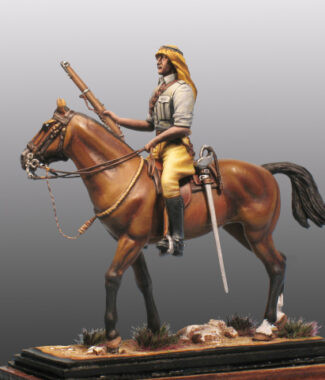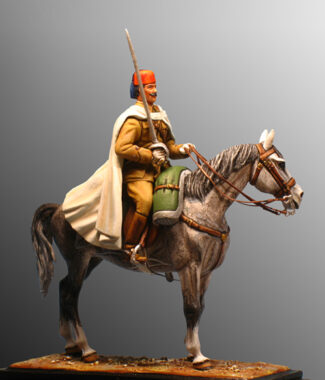You must be logged in to post a review.
Spahis of Tripolitania – 1926
€68.00
Figure to assemble and paint
Ref.: 07 – TC
Weight: 250 grs.
Material: White Metal
Number of Pieces: 14
Historical Review:
SPAHIS OF TRIPOLITANIA. BUGLER – 1926.
The Italian Spahis were light cavalry colonial troops of the Kingdom of Italy, created in Italian Libya between 1912 and 1942.
The Italian colonial administration of Libya formed locally recruited Spahi cavalry squadrons immediately after the occupation of Libya, during the Italo-Turkish War (1911-1912).
These differed from their French counterparts in that their primary function was that of mounted police, tasked with patrolling the countryside and desert areas, as well as providing escorts and scouts. The name is the French form of the Ottoman word sipahi, a word originally derived from the Middle Persian word Spah meaning “army” or “horsemen”.
Although they had Italian officers, these troops were less organised than the regular Libyan cavalry regiments (Savari). The spahi enlisted on his own horse, and was not obliged to undergo formal training, nor military discipline, nor indeed to wear a uniform, provided only a few distinctive elements to add to the white barracano(1), the Arab riding breeches with the balghe (Arab slippers) and the red chequia (round-shaped barboosh) in addition to the chequia, the red sash at the waist, the blue bournus with passementerie constituted their standard dress: the dress initially assigned to the border guards. These troops became part of the Regio Corpo Truppe Coloniali de Libia (Royal Corps of Libyan Colonial Troops), which included desert and camel troops, infantry battalions, artillery and cavalry. The Truppe Coloniali saw extensive service during the Italian conquest of Tripolitania and contributed mainly to the total control of Cyrenaica and Fezán, which was not completed until 1932. Subsequently, they patrolled the border areas of Italian Libya.
In 1936, Spahis and other Libyan units participated in the Italian invasion of Ethiopia and received a “Gold Medal of Honour” for their outstanding performance in the battle.
Armament consisted of the mod. 1891 T.S. musket with 96 rounds, later replaced by the mod. 1891 musket for the cavalry, to which was added, during World War II, an individual supply of hand grenades and the supply of a mod. 1930 Breda machine gun.
The saddle and harnesses were always of the traditional Arabian type, with coloured covers and trimmings, which were also decorated and adorned with ribbons for festivals or parades. Finally, the cloths for the Spahis trumpets were blue, emblazoned – on the obverse only – with the coat of arms of Savoy (white cross on a red field) and decorated with silver fringes and braided cords and white and red ribbons.
The figure rides a grey horse of the local breed, horses that are very hardy and accustomed to the harsh climate and conditions of Libyan territory.
NOTE (1)
Clothing characteristic of the indigenous peoples of West Africa, consisting of a piece of wool or cotton that is wrapped around the body, leaving the head and arms free.








Reviews
There are no reviews yet.